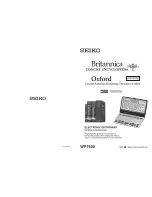
INTRODUCTION
The AK-900 Electronic Keyboard is a electronic music system that you put together. It has 37 keys, 8 instrument
sounds (piano, flute, violin, organ, French horn, banjo, music box, guitar), 8 tempo adjustable rhythms (pop
music, disco, march, rhumba, tango, waltz, swing, ballad), 4 percussion effects (bass drum, close cymbals, open
cymbals, indian snare drum), and 1 demonstration routine along with stereo, vibrato, and tempo effects. Most
of these sounds may be combined. The user can add his/her own music to a background tune. It uses 6 “AA”
batteries (not included) or an optional AC/DC adapter. The Keyboard is mechanically assembled by the user
with no soldering required. The only tool needed is a phillips screwdriver.
Recommended for ages 10 and up. However, after the assembly and lesson are completed it will be suitable
for ages 3 and up.
WARNING:
Choking Hazard: This kit contains small parts and should be kept out of the reach of small children until
it has been fully assembled. The optional AC/DC Adapter should always be kept away from small
children.
THEORY OF OPERATION
What is Sound?
Sound is a variation in air pressure created by a mechanical vibration. (For a demonstration of this, lay one of
your stereo speakers on the floor, place your hand on it, and turn up the volume. You should feel the speaker
vibrate. Now place a piece of paper on the speaker; if the volume is loud enough, you will see the paper vibrate).
Since the vibrations usually last for some amount of time we call the result
sound waves. If the vibration occurs
at a certain rate, then the sound wave will repeat itself at the same rate; we refer to this as the
frequency of the
sound wave. Nearly all sound waves have their energy spread unevenly across a range of frequencies. You
can compare sound waves from your voice to waves in a pond. When you speak, the movements in your mouth
create sound waves just as tossing a rock into the pond creates water waves. Sound waves travel through air
as water waves travel across the pond. If someone is nearby, then their ears will feel the pressure variations
caused by your sound waves just as a small boat at the other side of the pond will feel the water waves. When
you say a word, you create a sound wave with energy at various frequencies, just as tossing a handful of
various-sized rocks into the pond will create a complicated water wave pattern.
Just as there are sound waves caused by mechanical vibrations, there are also
electrical waves caused by
electrical variations. Just as sound waves travel through air, electrical waves travel through wires. A
microphone
senses pressure variations from sound waves and creates electrical waves at the same frequencies. A
speaker
uses the energy in electrical waves to create mechanical vibrations (sound waves) at the same frequencies. In
addition, electrical variations at high frequencies (referred to as radio frequencies) can be used to create
electromagnetic radio waves which travel through air and are used for many forms of communication.
The subject of music is one where the worlds of art and science come together.
Unfortunately, the
artistic/musician field works with qualities that depend on our feelings and so are difficult to express using
numbers while science/engineering works with the opposite - clearly defined, measurable qualities. As a result,
some of the terms used may seem confusing at first, but you will get used to them.
Let’s talk about frequency some more. Frequency is the number of repetitions per second (for sound or
electrical waves), expressed in units called
hertz (Hz). The metric prefixes can be used, so 1000 repetitions per
second is 1
kilohertz (kHz) and 1,000,000 repetitions per second is 1 megahertz (MHz). The range of
frequencies that can be heard by the human ear is approximately 16 to 16,000 Hz and is referred to as the
audio
range. The musical world’s equivalent to frequency is
pitch. The higher the frequency, the higher the pitch of
the sound. Frequencies above 3000 Hz can be considered to provide
treble tone. Frequencies about 300 Hz
and below provide
bass tone. Loudness (the musical term) or amplitude (the electronics term) is increased by
simply sending more electrical power to the speaker.
-3-
Содержание AK-900
Страница 24: ......





































